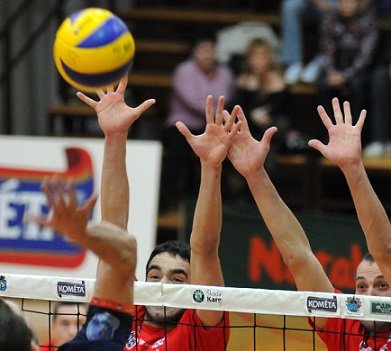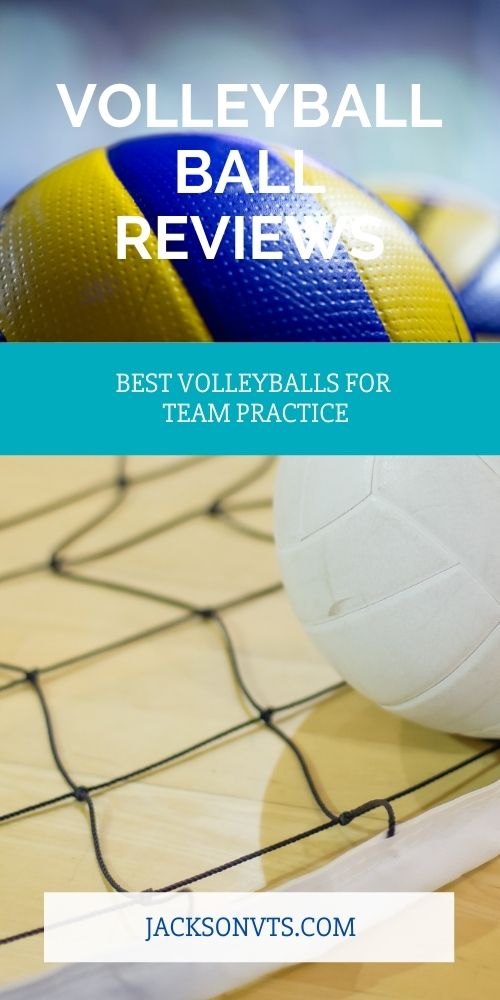Volleyball Ball Reviews
Looking for a new volleyball ball?
When deciding what ball you would like purchase, first consider what you'll be using the ball for.
Are you a novice player? If you're just beginning your volleyball journey, you may want to first start out with a cheaper volleyball.
The cost for volleyballs range from as little as $10 on up to $70.
If you're new to the sport, it might be a good idea to first buy a less expensive volleyball because you don't know yet how long you'll be playing the sport.
As your skills improve and you become more passionate about volleyball, you'll likely want a nicer volleyball.
Tachikara Viper
Advantages to the Less Expensive Volleyball
1. If you end up giving up the sport, no harm done.
2. When first learning how to play, a cheaper ball will work just fine. Only when your skills have advanced will you notice a big difference in the quality of ball.
Advantages to the More Expensive Volleyball
Once you've developed you're playing skills, you'll really start noticing the differences among volleyballs. For example, some balls will rebound off your arms easily while other ball just die. Some balls will feel much harder. This can be very uncomfortable passing a hard volleyball.
Official Volleyball Ball Size, Dimension, and (PSI) Pressure
The following is the official rules for NFHS National Federation of High School Volleyball Competition.
All panals of the volleyball must be solid white or have a maximum of 3 colors. Each panel must be a solid color. At least 1/3 of the panels must be solid white.
Here's a complete list of NFHS Authenticating Mark Program approved balls.
Volleyball ball Dimensions
The ball shall measure 25 inches, but not be any more than 27 inches in circumference.
Volleyball Ball Pressure and Weight
The ball shall weigh 9 to 10 ounces when inflated. The ball shall inflate to 4.3 to 4.6 pounds per square inch of air pressure (psi).
A couple more things about High School Volleyballs...
1. The home team shall provide the official game balls.
2. The volleyball should include the NFHS Authenticating Mark.
The Mark can be displayed in either of these two ways.
NFHS Authenticating Marks
Types of Volleyballs
You've probably noticed there is a wide selection of volleyballs out there on the market to choose from. With so many options, it can be very difficult to make a good decision on what ball is right for you.
The Recreational Volleyball
The recreational volleyball is the ball that's usually about half or a third the price of a competition ball. Most major brands such as Tachikara and Molten carry recreational volleyballs.
The Practice Volleyballs
Practice volleyballs cost about 2/3 the cost of competition volleyballs. These balls are usually bought buy high school and club teams to use in practice. In my opinion, using these cheaper volleyballs for practice is a good idea only if they are similar to the the balls you'll use in competition.
You want to be careful to not get volleyballs that are too different than the volleyballs you use in tournaments because it can be very difficult sometimes to adjust to the a different type of volleyball.
For example, the Moten FLISTATEC is a ball that's sometimes used in elite volleyball competitions.
This type of ball is very different (particularly the hexagon shape grip on the panels).
If you aren't used to this ball, it can be very frustrating to play with. I would suggest practicing with this volleyball before competing in important tournaments where this is the official game ball.
Good Balls for Practice
The Molten L2 is a pretty good practice ball. It's especially good if you're transitioning from Volley Lites to a standard weight volleyball. There is a big selection of different colors of this ball. Also, a fair price. Just over $30.
Molten L2 Volleyball
If you enjoyed these tips and would like to keep it close to you at any time, just save this pin to your Pinterest Volleyball Board.
Home › Gear › Ball Reviews





